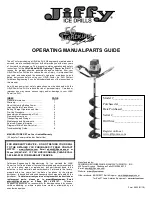
17
Commissioning
Lazy Jacks
When raising, lowering, or reefing sail, make sure sail
is not loaded and cars pass easily through switch.
Watch sail and cars carefully. Stop hoisting immediately
if any binding is detected.
Possible sources of binding:
Cars bind at switch.
Reef line binds on fingers.
Reef line binds between car and switch.
Headboard binds on Lazy Jacks.
Correct the binding problem or luff sail before
resuming hoist. If forced, the fingers that extend
into switch may be damaged, requiring expensive
switch and car replacement. Lazy Jacks may also
be damaged.
Important! When using an electric halyard winch,
be especially vigilant when raising sail. Luff sail.
Watch for any binding or jamming at the switch.
Stop hoist immediately if any occurs.
If winch operator does not have a good view of switch
cars, station a crew member with a good view and
communication to operator.
Crew member must be able to communicate
problems to the winch operator immediately.
If there is a jam, damage to switch and cars will
occur very quickly resulting in expensive repairs
unless hoisting is stopped.
Important! Make sure reef outhaul loads are not applied
to cars when in switch. Damage to switch and cars will
occur, resulting in expensive repairs.
H
A
R
K
EN
H
A
R
K
EN
Use shockcord to hold Lazy Jacks open
so Battcars and battens will not catch on
them. This will also help stop slapping of
Lazy Jacks on sail.
Attach one end to lower spreader tips and
other to Lazy Jacks. Make sure shockcord
is long enough so boom can swing all the
way out without damaging spreaders.
Operation
Raising Sail
IMPORTANT! Watch for
binding at switch. Stop
hoisting immediately.








































